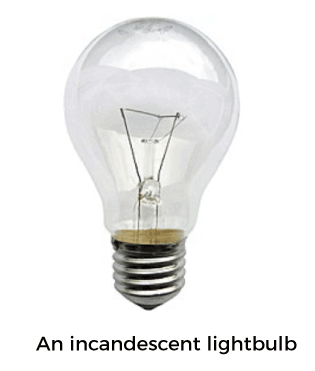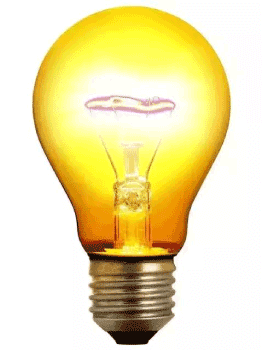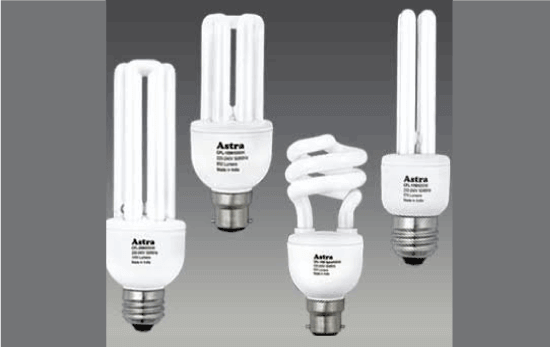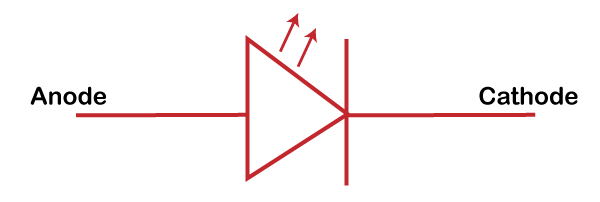Who invented bulb?
In ancient times people used wood and oil for lighting, but after the invention of electricity, many things were invented. The bulb is one of the very important inventions as it lighted the world. It is considered that Thomas Edison invented the light-bulb, but edition made the development of one of the first practical light bulbs. It was Humphry Davy, an English scientist who developed the first light bulb in 1800.
What is a light bulb?
A light bulb is an electric light made up of glass inbuilt with a filament. The inside of the bulb was filled with some inert gas for protection of the filament by oxidation. When the filament got the electric current, it was heated up, and this heat gives the light to the bulb.
Pre-commercial developments
Early developments of incandescent light bulb

- Humphrey Davy, who developed the platinum filament and the carbon arc lamp, first did his experiment over Volta's battery in 1802. He attached the wires with a battery and a piece of carbon. When the current was passed through the wire, the carbon heated and produced light. To create an incandescent light, he passed the current through a thin strip of platinum, but it was neither bright enough nor last long.
- On this basis, several experiments were done. In the nineteenth century, various experiments were done by several scientists with different metals like platinum, iridium, carbon rods, etc. they also used different types of enclosures like evacuated or semi-evacuated.
- Most of the experiments were demonstrated in which some were also patented.
- A constant electric light was demonstrated by James Bowman Linds publically in Scotland, but he did not make any light.
- Marceline Jobard developed an incandescent bulb with a carbon filament in After this, Warren De La Rue (1840) developed a vacuum tube enclosure. He used a coiled platinum filament in the encloser. Since the design was workable, but due to the cost of platinum, it did not suit the commercial use.
- Frederic De Moleyns of England (1841) developed the powdered charcoal filament. He got the patent first to develop an incandescent bulb. In 1845 John W. Starr, an American developed an incandescent light bulb using carbon filaments but it was also not produced commercially.
- Jean Eugene Robert-Houdin demonstrated incandescent light bulbs in 1851. The incandescent bulb was developed by Moses Farmer in 1859. He used a platinum filament as well as got a patent for this development. Later it was purchased by Thomas Edison.
- Alexander Lodygin, a Russian, developed an incandescent light bulb in 1872 and patented it in 1874. Later he moved to the S. and patented several incandescent light bulbs. He had used different filaments made up of different metals like tungsten, iridium, chromium, etc. He also gave a demonstration of the filament made up of molybdenum at the Paris world fair in 1900.
- In 1875, Henry Woodward and Mathew Evans developed a gas-filled "globe". They applied for the patent in Canada in 1874. That bulb was made up of carbon rods, and he used nitrogen gas for filling in a glass that was of the cylinder shape. However, as they could not commercialize their lamp, they sold their patent (S. patent 0,181,613) to Thomas Edition in 1879.
- An important development was made by Alessandro Cruto in 1880. He developed a filament made up of platinum layered by graphite. To find such a filament first, he covered the wire of platinum with graphite. Then he heated that platinum at maximum degree temperature; after heating, it left a thin filament layered with graphite. By this experiment, Cruto invented the first synthetic filament in 1881.
- This light bulb lasted five hundred hours, which was more than Edison's forty hours. Cruto's light bulb was more workable and efficient in comparison to Edison's light bulb that gave a better white light. Afterward, in 1893 Heinrich Gobel also claimed that he designed the first incandescent light bulb in 1854 but failed to get a patent.
Commercial development
There were several inventors who made development and commercialized, but the two names Swan and Edison, were very important in this field.
Joseph Swan's development of the light bulb
- In 1873, Joseph Swan, a British, made a carbon fiber filament. He started this experiment in the year 1850, but due to some faults as well as some lacking, he was not successful at that time. But later, he made some improvements and successfully made a light bulb. By the mid-1870s, after the availability of better pumps, he again started and with the help of Charles Stearn (an expert of vacuum pumps).
- He developed a method that can avoid the early bulb blackening in 1878. For this development, he got a patent in 1880. But when Swan gave a demonstration of his light bulb made up of a carbon rod, its resistance was not good as it also needs a powerful conductor for supplying sufficient current. Therefore it proved very impractical.
- He produced a better carbon filament & obtained British patent 4933 in the 1880s. From this year, the installation of a light bulb in homes and landmarks in England started. Swan was the world's first man who used hydroelectric power as well as a light bulb for lighting his house. There were also some more places in London like Lord Armstrong's house, savory theatre, etc., which was the world's first lighted by Swan's light bulb in
Thomas Edison's development of the light bulb
- Thomas Edison developed a long-lasting filament as well as improved carbon filament manufacturing. The first practical incandescent bulb is developed by edition in 1878 as he applied first for the patent of a light bulb in 1878. He did several experiments like; first with carbon in the early 1880s, then with platinum and other metals & finally with carbon filament. His first successful test lasted 5 hours in 1879.
- Later by experiments and improvements, he found out an important fact that a filament made up of carbonized bamboo can work more than 1200
- Edison's light bulb first lighted the Navigation Company Steamer and Oregon Railroad in 1880.
Who tried to exploit Edison's patent?
However, there are also some people as well as the competitor who tried to make Edison's patent invalid, like Albon Man, a lawyer of New York open an Electro Dynamic Light Company to destroy Edison's patent.
Further United States Electric Lighting Company was organized in which Hirams Maxim was the chief engineer. He also improved carbon filament manufacturing. Lewis Latimer, who was once an employee of Edison, improved the method of heat-treating carbon filament that reduced breakage and was able to mold into shapes like character "M". Latimer received a patent for the process of manufacturing carbons. Later, United States Electric Light Company purchased this patent.
Merging of Swan and Edison Company
Due to Swan's pressure, Edison had to merge his company into Swan's company, and that became Edison and Swan United Electric Company. But later, Edison takeover all the interests of the company, and Swan has to leave, and he sold his patent to another electric company in 1882.
Other inventors
Arturo Malignani, an Italian inventor, developed an evacuation method in 1896. By this method, a bulb could work 800 hours. He also got a patent for it. Later Edison adopted this patent in 1898.
Metal filaments and gases
- In 1902 a new development, Tantalum lamp filament, was made. This was more efficient than earlier graphitized carbon filaments as they can work at a higher temperature. It was used in the U.S. until
- The other metal, like osmium, is also used for making filament, but due to being expensive as well as inefficient for high voltage, it was used for standard voltage circuits.
- Two inventors Sandor Just and Franjo Hanaman, got Hungarian patent to make first a filament with tungsten metal. This tungsten filament lamp was more efficient than carbon filament as it lasted longer as well as gave a brighter light. This type of bulb is filled with an inert gas like argon and nitrogen in order to slow down the evaporation of tungsten filament for working in more temperature.
- After them, William D. Cooling, in 1906, made ductile tungsten for making the filaments. General electric companies in which cooling were working used this method for the incandescent light bulb and start selling by 1911.
- Later in 1913, Irving Langmuir found out that inert gas decreases the bulb blackening in respect of vacuum.
- Further coiled-coil filament by Burnie Lee Benbow in 1917 and coiled-coil tungsten filament by Junichi Miura in 1921 was developed. Coiled-coil filaments were produced commercially by Hakunetsusha from 1936.
- After that, Marvin Pipkin developed a frosting method in 1925 and got a patent for coating with silica inside of bulb in 1947. Imre Brody, a scientist from Hungry, used krypton gas in place of argon as well as developed a method for getting krypton from the air.
- By the time in 1964, the efficiency, as well as the production of the bulb, increased, and its costs decreased as compare to Edison's bulb. As a result, gradually, the consumption of bulbs increased, and it has been used by millions of people.
Types of bulb
There are various kinds of light bulbs with different purposes. The basic kind of light bulbs are as follows:-
Incandescent bulb: - It is the most popular type of bulb used by the common people. This bulb is an earlier invention as it lighted the houses first. Earlier carbon filament was used in the bulb that was less efficient as it lasts less and produces less light and also blacking the bulb, but after the development of tungsten filament, this problem sorted out as the filament made up of tungsten metal is more efficient than that of carbon filament. Tungsten filament lasts long as well as produced more light. A Halogen lamp is also a kind of incandescent bulb.
An Incandescent bulb is made up of glass. Inside the glass, there is a thin wire called a filament, which is made up of carbon and tungsten. Inside the bulb, the air is removed and filled with gases like neon and argon to protect the filament. When the filament gets electric current, it heated up, and this heat lighted the bulb. However, its light is yellowish in color.

Fluorescent light: - It is a gas discharged light also called CFLs (compact fluorescent light. Now a day it is more popular than an incandescent bulb. It produces less heat and more light than incandescent. However, earlier, because of its size, it was unable to fit in a socket, so it was very less in use, but by the end of the 20th century, it was more popular.
A Fluorescent bulb is also made up of glass. It is filled with gases like argon and mercury. After heating, the gases change into atoms, and energy and many more changes take place that finally produced light. Its light is white in color. However, when it breaks, mercury gas can affect breathing.

Light-emitting diode: - It is also called LED. LED light was invented by an American scientist Nick Holonyak. It is more efficient than both incandescent and fluorescent bulbs because it lasts longer than those. Although earlier it used to produce less light as well as it was costly but by the time with the improvement it became more popular than those of incandescent and fluorescent bulbs.

LED is a chip of semiconducting material. It doesn't use mercury gas like fluorescent. It required very little energy in comparison to incandescent as well as last longer than both. So nowadays it is the most popular one, and also its future is better than those.
Overall apart from the above types, there are several more types as still, it is not the end, and by the time new developments are happening in order to make a better and more efficient bulb.
|




 For Videos Join Our Youtube Channel: Join Now
For Videos Join Our Youtube Channel: Join Now









